Lennon Wall
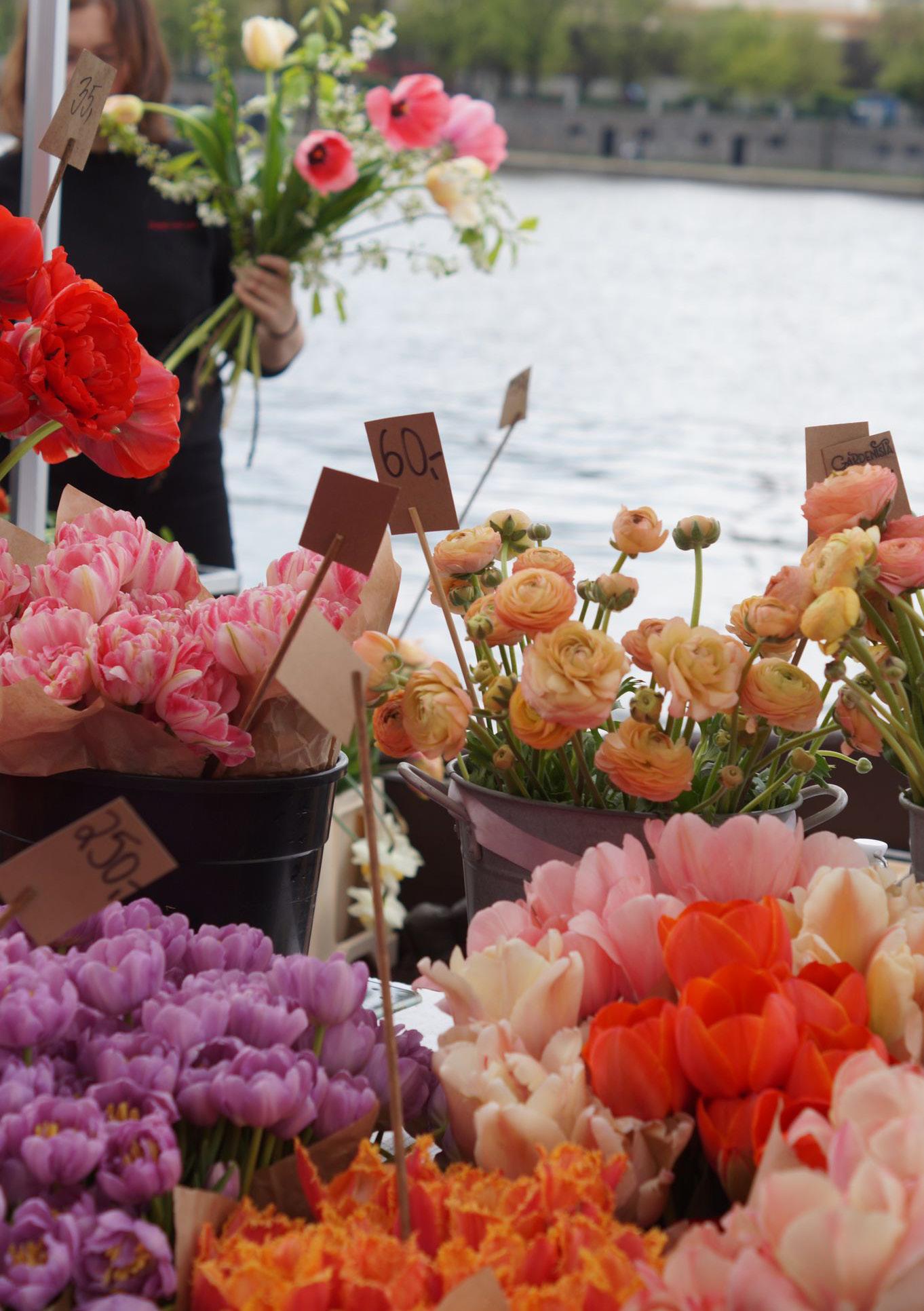
student life | music | art | opinion | prague spring 2023
1
2023
of Lennon Wall from Anglo American University Printed by Indigo Print All photo rights reserved to original owner
Kvi-
2
Copyright May
Courtesy
Cover Photography by Ekaterina
atyk
My
The
Contents 6 7 9 23 15 11 17 21 26 28 30 33 37 35 Editors Note Abigail Calandra Staff and Contributors Pictures of the Lennon Wall team Daffodil Madison Codoner
land: Exhibition Review Antoinette Goldberg One World Film Festival Reflects on the ¨’Cost of Saftey’ Abigail Calandra AAU’s 2023 Spring Ball Nanako Yamamoto El Che Guevara: The Man Behind the Image Ela Angevine
Increase for Fall 2023
Burgess
Body is Not an Is-
Tuition
Gabriella
Power of Female Friendship Nanako Yamamoto University’s Value in Today’s Economy Ela Angevine
doiron Hadley Hyatt
Fighting Fast Fashion: With Alex Andra-
Ela Angevine
Things I Can’t Live Without
B*tch Gabriella Burgess
Harelly? Violeta Zarate 41 Growing Up Madison Codoner Ponder Equality Sara Quintero 43 3
History of the word
Who is Vianney
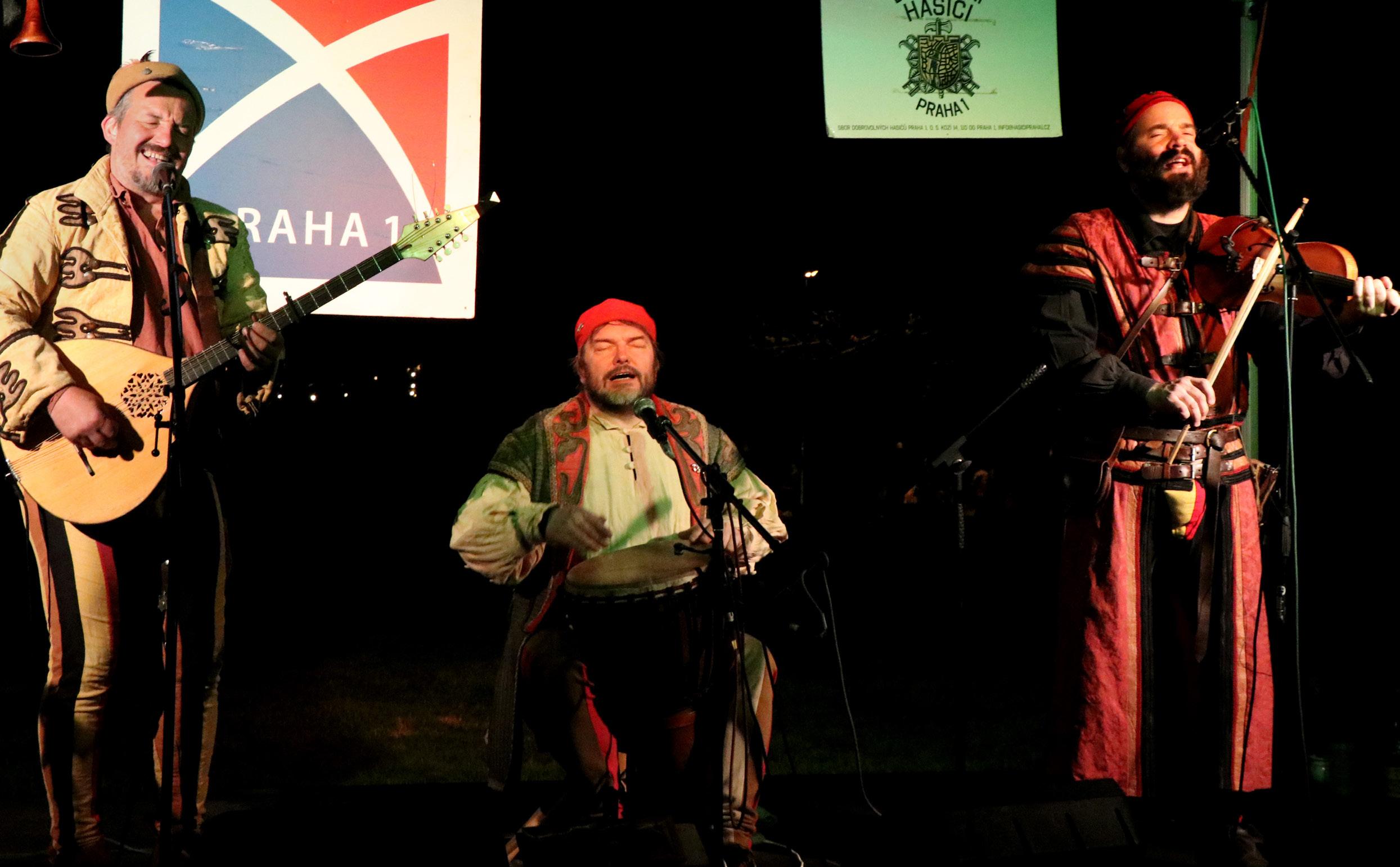

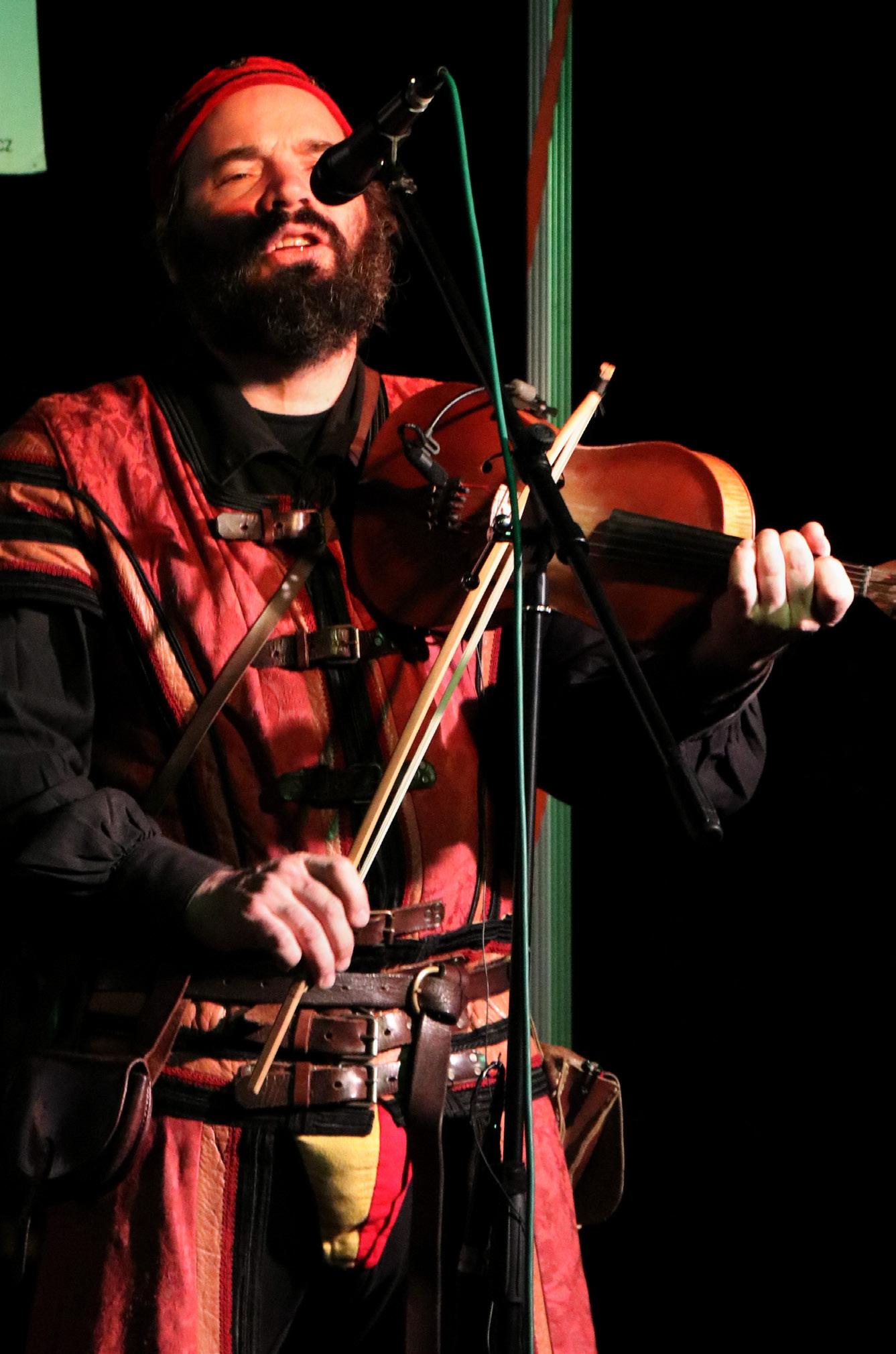
4
photography by Hadley Hyatt
Dear AAU students, faculty, friends, and family,
It feels unreal that I’m already writing a letter for the spring semester print edition of Lennon Wall, it seems like I wrote the fall semester one just a couple of weeks ago. But I guess time flies when you’re having fun (and writing your thesis), right?
My last three years as part of the Lennon Wall staff were one of the most meaningful parts of my AAU experience. I feel so grateful that I was able to move up the ranks and that administration trusted me with the role of Editor in Chief. But, nothing would have gotten done without the work of a dedicated staff and a talented editorial board that had my back. A special thanks to layout designer Nazani Cassidy, the print wouldn’t exist without you, and to Maegan Comer for her three years of dedication and ability to fulfill every role— you’re my rock.
This semester the staff took on articles and poems that expressed their creativity, immersed themselves in culture, and told meaningful stories about their own lives. Lennon Wall will continue to seek to be a voice for students and a source of information in the semesters to come and I have complete faith that the staff will continue to pursue the values of democracy and self-expression moving forward.
Moving to Prague was not an easy adjustment at all, but in hindsight, I wouldn’t change anything because of what I learned about myself and other people, the friends I’ve made, and an academic environment where I felt valued. I really grew into who I am over the course of my studies, especially in the last year, and I want to thank all of those who played a part in it.
For those of us graduating, this time of year can feel overwhelming but also exciting and I can’t wait to see where the class of 2023 goes next. I could easily make it seem like I’ve got everything figured out, except this is the first time that I feel like I have no idea what I’m doing, and it’s sort of freeing— also terrifying. But, if the last three years have taught me anything, it’s to embrace the uncertainty and not to take anything for granted.
Congratulations class of 2023 and on to the next adventure! Thank you AAU community for letting me serve you for the last three years, enjoy your summer.
Kind Regards,
Abigail Calandra
Lennon Wall Editor in Chief

5
LENNON WALL
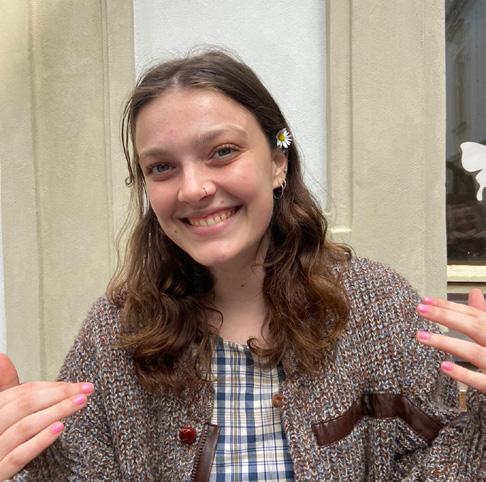
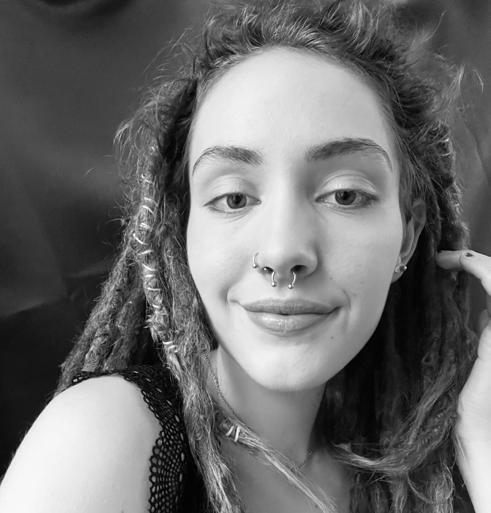




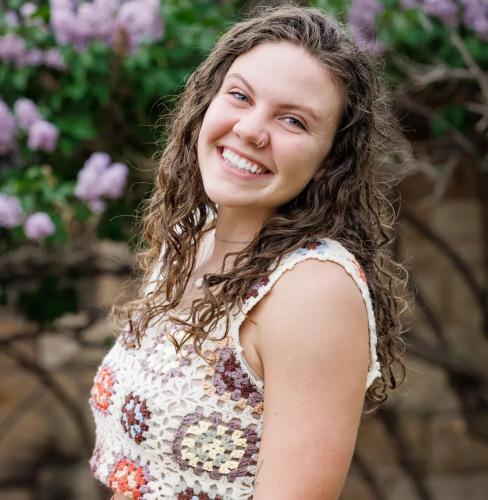
 Abigail Calandra Editor in Chief
Maegan Comer Print Editor
Gabriella Burgess Creative Section Editor
Abigail Calandra Editor in Chief
Maegan Comer Print Editor
Gabriella Burgess Creative Section Editor
6
Ela Angevine On Campus Section Editor
WALL STAFF
WRITERS
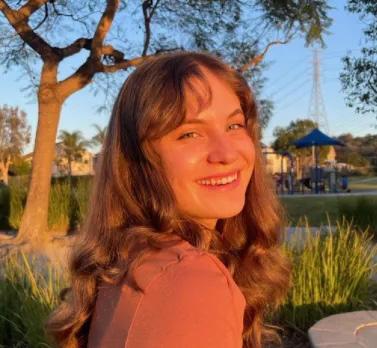
Nanako Yamamoto, Madison Codoner, Violeta Zarate, Sara Quintero
 Hadley Hyatt Multimedia Editor
Grace Baker Culture Section Editor
Antoinette Goldberg Opinion Section Editor
Nazani Cassidy Layout Designer
Rebeka Hoblik Proofreader
Hadley Hyatt Multimedia Editor
Grace Baker Culture Section Editor
Antoinette Goldberg Opinion Section Editor
Nazani Cassidy Layout Designer
Rebeka Hoblik Proofreader
7
Ekaterina Kviatyk Assistant Editor in Chief
Daffodil
If I was a daffodil
I wouldn’t be ashamed
All the emotions running wild
Would suddenly be tamed
Maybe then I’d finally stomach
The utterance of my name
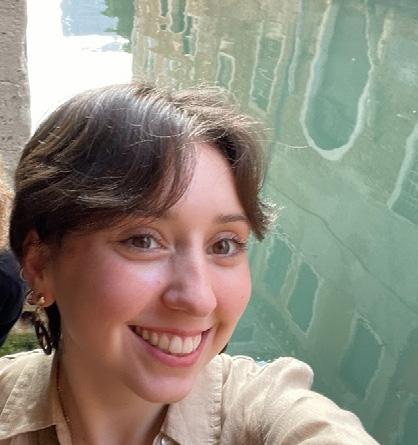
Wish the wind would keep me rooted
Instead of blowing me away
My self proclaimed whispers
Could be heard no matter the sound
And my beauty would endure
Even after my petals hit the ground
By Madison Codoner 8
This poem came to me back in New York during a shift this past Winter. I saw a TikTok full of tattoo ideas, one depicting a bouquet of wilted flowers being watered by a watering can. This illustration spoke to me, with the idea that when everything feels crushing, you can still grow. One flower in the design is still standing strong, healthy amid the wilting flowers. After writing this piece , I decided I wanted to have it on my body forever. My tattoo artist made a few tweaks to the desnign, swapping the original flowers out for daffodils (the birth flower for March, my birth month), and redesigning parts of the watering can. This poem and tattoo represents persevering and pushing through even when things get complicated. It stands for growing out of bad habits and putting yourself first, even if you don’t think you deserve it.

 Madison’s Tattoo
Madison’s Tattoo
9
Ekaterina Kvyiatyk
My Body is Not an Island: A Living Exhibit
 By Antoinette Goldberg
By Antoinette Goldberg
Eva Koťátková, a Czech artist known for using her art to uplift voices, created an exhibit at the National Gallery Prague (NGP), fusing neglected stories of the human experience with artificial and inanimate objects.
The poetic installation called My Body is Not an Island captivated audiences through the live readings of the displays. Every other Saturday, the exhibit takes inspiration from the film “The Night at the Museum” and comes alive. Performers read the stories attached to each installation live, some dressing as the junction between humans and monsters and others lure the audience in with the raw emotions attached to each tale.

10
Abigail Calandra
“I think that the mediating factor of having a human there to have eye contact with– can definitely be helpful in helping all of us at the same time process the emotions that come up”, said Glynis Hull-Rochelle, a performer and affiliate of the Institute of Anxiety, a project by Koťátková educating the public through art and the discussion of taboo topics.
The notably complicated space is laid out in a large warehouse room with tall ceilings covered in signs and red netting. The room is broken up into a fragmented body, half-fish and half-human, sharing about 25 stories. The stories range from the tale of night workers depicted as boxes with robotic faces to a circular table called “the collective body” placed in the middle of the exhibit containing statements of issues and disabilities people face written on playing cards.
The forced circumstances people are placed in by society are highlighted in Eva Koťátková’s installation, making the space emotional while confronting the viewer. The main lesson relayed to the audience is, “The simple ways of considering other beings and the Earth,’’ Hull-Rochelle said.
One of the 25 striking stories depicts a woman being committed to a psych ward. While attempting to explain her experience to her friends and family, the narrator found herself met with backlash and anger. In an attempt to describe this piece, Koťátková arranged enlarged pills and capsules on top of a jumbo button down shirt creating an eyesore no viewer could avoid.
The National Gallery Prague describes Koťátková’s work as, “a platform opened with empathy to those whose voices – human, vegetal, animal – are reduced to silence, whose condition is challenged, whose life has been uprooted, and who undergo forced labeling and stigmatization.”
A key theme translated to viewers of the exhibition lies in the story within a story. Each audience member is able to read a tale and find an aspect that echoes within themselves – even the performers find pieces of themselves within the text. Laura Henderson, a performer and colleague of Eva Koťátková at My Body is Not an Island was reminded of her own anecdote among a narrative about a bush having its roots ripped out.
11
Calandra
“For me personally, suddenly the story about the Bush pulled out by the roots resonates strongly for me as I am a foreigner and through some complicated circumstances, I am not able to leave this country and return to my native soil,” Henderson said. Later, they recalled moments in the exhibition’s stories sparking memories of love, loss and identity within themself.
Eva Koťátková differentiates their exhibit from the majority of shows found at the NGP by having an element of interaction between the art and the audience. The public has the option to lay in a cove reminding the viewer of a chest through the lines of the ribs while listening to a recording of a story. Alternatively, when ending the tour, the viewer can scribble a drawing or a personal anecdote to be hung up on a wall creating an entirely new exhibit of stories. The wall enables the continuation of My Body is Not an Island as stories are told, read and heard, awaiting its message to resonate with the next viewer.
“My hope is that hearing an echo of their own story through someone else’s story helps them feel less alone. I want people to know that many of the painful experiences they have had are due to systemic failures. Too many people’s traumas are not understood in the wider social context of racism, ableism, transphobia, homophobia, sexism and socio-economic inequality, but instead reduced to individual problems. But to quote Bishop Desmond Tutu, ‘We cannot just keep pulling people out of the river, at some point we need to find out why they are falling in.’”
My Body is Not an Island will run from December 7th until June 4th, 2023 at the Trade Fair Palace located in the Great Hall.

Antoinette Goldberg 12


13
photography by Mia Herring
One World Film Festival Reflects on the “Cost of Safety”
 By Abigail Calandra
By Abigail Calandra
Theaters across 28 cities in the Czech Republic opened their doors from March 22 to April 4 for One World Film Festival, the largest human rights documentary film festival in the world. The festival was established in 1999 by People in Need, a Czech humanitarian and human rights organization, and is recognized by UNESCO for its contributions to raising awareness about human rights issues around the world.
In honor of One World’s 25-year anniversary, the festival director Ondřej Kamenický says, “For this year’s edition, we decided to expand to include a discussion program that carries equal weight with the film program and to give more space to virtual reality.” This portion includes debates, discussions, and Q&As with film directors and human rights activists after most of the film screenings.
This year’s theme was titled “The Cost of Safety,” and the films represented this year all touch on feelings of insecurity and the search for safety. According to Kamenický, “Whether it’s the feeling of financial security, family support, or the security guaranteed by the state, these connections mean something different to each of us. Even the price we’re willing to pay for safety differs for everyone. With the slogan The Cost of Safety, we would like to encourage audiences across the Czech Republic to think about and respect each other’s diverse manifestations of fear.”
Crows are White, a film presented in this year’s festival, looks at a more unconventional view of safety. It tells the story of film director Ahsen Nadeem’s journey to a Buddhist temple in Kyoto, Japan in search of a spiritual mentor.
14
Nadeem comes from a deeply Muslim family from Saudi Arabia and finds himself living a double life: the one his parents expect and the one he lives with his non-Muslim partner in the United States. Ridden with spiritual guilt, he makes a pilgrimage to one of the most prominent Buddhist temples.

Along Nadeem’s journey to confront his fears about love, truth, and faith, he meets an unorthodox monk with a major sweet tooth who finds solace in heavy metal music. Both are outcasts within their faith and portrayed as lazy. While Nadeem may not have the discipline of a monk, he approaches the making of the film with borderline obsessive commitment and humility. The result is a film that is vulnerable, comedic, and introspective for Nadeem and the audience.
One World also had a section dedicated to Ukraine with one of the feature films titled Overcoming the Darkness, which was created by a collection of Ukrainian filmmakers who documented everyday life amid war. This film kicked off the festival following the opening ceremony which included the presentation of the Homo Homini Human Rights Award that went to Venezuelan activist Javier Tarazona.
One World in Prague ended on March 30 following the announcement of the winners of the international competition based on the decisions of juries and audiences. The International Directing Competition Jury Prize was awarded to We Will Not Fade Away by Alisa Kovalenko and the Jury Award for Best Film in the International Competition went to Apolonia, Apolonia by Ley Glob Monies.
Even though One World won’t be back in Prague until next year, select films are on One World Online from April 2 to 16. The festival will also run in Brussels from April 20-27. More information can be found on their website.
One World Poster 2023 15


16
AAU’s 2023 Spring Ball
By Nanako Yamamoto
Anglo-American University’s 2023 Spring ball was held at Mayakovsky Hall on the chilly night of March 17. It was like walking into a fairytale.

This was the first spring ball in the past three years, and the students prepared with ballroom dance lessons, dress shopping, and haircuts. Sure it may have cost money and time, but who cared? It was a price worth paying for a night no one would forget. AAU students and friends who were decked to the nines, all with their own personal touches, filled the ballroom to sip on champagne and take in the long-awaited events of the night to come.
Entering the venue, guests ascended the grand stairs to the second floor where neoclassical designs—fresco painting on the ceiling, crystal chandeliers, and sprawling balconies—met astonished faces and gave an air of royalty.
After ordering snacks and drinks from small wagons in the hall, the night started with welcome speeches and continued with a blues dance lesson by AAU’s Vice President for Academic Affairs, Miroslav Svoboda. The overcrowded dance lesson turned to chaos, but it was welcome mayhem, taken lightly as people yelled over their shoulder, “Sorry for bumping into you!”

17
Suddenly, yellow balloons covered the lively dance floor indicating it was time for the dance contest. Each couple held a balloon between their chests or heads and tried not to drop it while dancing. The game uplifted participants, filling the room with laughter. The balloons stayed on the floor, jumping every time the floor shook as if they were enjoying the party themselves.
The band’s live performance provided participants with sounds that covered every inch of the space. The elegant ball turned into a wild display of AAU’s best disco moves when they played ABBA songs and people danced the night away. No one was thinking about the fact that their dress cost 20-times the price of a Big Mac and that their high heels were digging into their feet leaving painful blisters and sore toes. It was a night for fashion and self-expression but also one that brought the community together.

Bright red and black dresses were popular attire, as were long, tight classical dresses with and without straps while some rocked pant-suits with leather belts and high heels. A student in a faint pink dress with floral chiffon peeking out every time she walked embodied the princess-like dream that presided over the night.
Approaching midnight, the party was almost over. Strangers that danced together became new friends, bonded through the night’s nostalgia. Everyone dreaded the return to everyday life without ball gowns and suits, champagne and snacks. Finally, when silence rang throughout the once noisy hall, and the one-night-only magic was gone, the ball was over, but the feeling of joy and rhythm of dance stayed with everyone.
18


 Photography from Anglo American University Flickr 19
Photography from Anglo American University Flickr 19
El Che Guevara: The Man Behind The Image
 By Ela Angevine
By Ela Angevine

Che Guevara, or El Che, was a revolutionary whose views on capitalism did not waver. Somehow his image has come to mean different things to each person who dons the pop icon in the form of T-shirts, posters, hats, eating utensils, beach towels, or even alcohol bottles. All for sale, all for the price of participating in a system he despised. The man who accidentally made it all happen was Cuban photographer Alberto Korda.
Well, this is not necessarily true. An Italian businessman, Giangiacomo Feltrinelli, turned radical leftist visited Korda asking for a picture of Guevara and used it as propaganda without mentioning the photographer (however, this did not make the image famous either). Later, Jim Fitzpatrick, an Irish pop-artist most known for his rendition of Korda’s image, printed a two-toned image of Che’s portrait after meeting and being enamored by El Che.
Korda was a fashion photographer, not a documentary photographer. He was not in the habit of taking candid photos, but he believed in the revolution and every shot he took arose from an interest in what was going on. Ironically, the famous Che image is only a part of the whole. The people who do know that the image originally contained palm fronds to the right and an unknown man to the left, however, are also more likely to know what El Che represents and how he or Korda might have wanted the image to be used.
Although it is highly subjective because neither of the men are alive today, the only people we have left to tell both men’s stories are the close relatives and friends who are the sole protectors of their legacies—legacies that some might think do not deserve protection due to the violence and thousands of deaths that the revolution left in its wake.
20
Credit / Alberto Korda
Critics see Che as a terrorist, and the wide-spread use of the image as an insult to injury after those dark times in Cuba. This position should not be ignored because the intention of a man is just as important as his actions. It is true that his actions did result in tragedy; that fact should not be ignored. His full story, on the other hand, can be used for good to learn from past mistakes.
Guevara’s charismatic personality is simplified in this famous image, blurring reality. The use of the image as it is today masks the truth. This is what makes it hard for critics to accept because Fitzpatrick’s intention was for his creation to “breed like rabbits.”
The relative running the Korda estate has launched many lawsuits against the capitalistic uses of the Che image. It is claimed that Korda would not have wanted his image to be taken out of context because he looked up to Che and believed in what he was photographing. The Korda estate has tried to capitalize on the image. The photographer never received compensation for the use of his image because he took it under a communist regime when everything fell under public domain.
Korda was there alongside Guevara; he saw the tragedy, the whole truth, and he chose to stay, to believe. Although Fitzpatrick is responsible for the explosion of the image, he did not fully understand the context and can never understand its brutality. Fitzpatrick is wrong to capitalize on an image he did not take and does not fully understand.
People who buy products with the Fitzpatrick version of the image are usually pawns of a capitalistic society with no power—though producers should be held accountable by consumers for what an image means before it is plastered everywhere. Now it is as if everyone owns his image, and this is something that Che would have been proud of. Guevara did not believe in capitalism, and he wanted to give back to the people. There is no more powerful, long-lasting way to give back to the people than through a timeless image that has swept the globe as an image of hope, revolution, and power.

The context in which the image is used today varies immensely, with some people not knowing who he was. However, in the Korda estate’s opinion, the use of the portrait that Che would have been most empowered by is in revolution, fighting for a cause for the people. An example of such a movement is the 1968 riot in Paris which led to the pop-art form of Guevara’s image becoming famous. Another is the influence it had on Malcolm X and the Black Panthers: “By any means necessary.”
A transcending meaning is most likely what Che Guevara would have wanted: to have a legacy that has the power to incite revolution and inspire hope at the same time. The meaning will continue to change, for better or for worse. Capitalism has taken its hold and who knows where it will go next. After all, its diversity is why it became the most used image in history.
21
Credit / Jim Fitzpatrick
By Gabriella Burgess
The AAU administration sent an email March 23 informing students of a tuition increase of 15,1 percent due to increasing inflation in the Czech Republic and worldwide. Students, confused by the email, wonder the reasoning behind the increase as some express financial concerns. Many students are concerned as some worry about finances. Many are confused as to why this is happening,what it means for students now and in the future.
Sarah Gido, a business student, understands the school’s need to increase tuition and states, “It’s valid considering what other universities are doing. They have to meet with inflation and the current market.” While an anonymous student has an opposite reaction saying, “I don’t know if I can afford tuition now, and I have to look at other schools. The tuition officers weren’t helpful when I asked for help.”

“I can fully understand students’ frustration,” AAU’s chief financial officer, Zdeněk Johanovský, “but it is important to mention that inflation has been increasing for some time.” AAU’s chief financial officer, Zdeněk Johanovský.
Johanovský encourages students to email the financial office or him directly with any questions or concerns with any financial issues. He also said that AAU management is looking into different ways to ease financial troubles for students, for example more job opportunities for students for instance study assistants program, student ambassador program, student mentor program and others.
“AAU also has to prepay for many of its services, meaning the increased financial burden had been existing as prices for various operation services went up for the entire 2022. This was also an important factor that must have been taken into consideration while deciding about the tuition increase,” Johanovský mentions.
Tuition Increase for Fall 2023
22
There are also scholarships available. The merit based scholarships (MBS) are the most accessible to all students and recently changed last year to allow more students to be rewarded. There were 27 students awarded MBS in Fall 2021 while 99 students in Fall 2022 after applying to the new MBS scheme. There were 25 students awarded MBS in Spring 2022, while 76 students in Spring 2023.
The Czech Statistical Office (CSO) reported a 15,1 percent inflation this year and AAU is increasing tuition and administration fees accordingly. Therefore, across the board the tuition has increased by 15,1 percent, but depending on the year you were enrolled in AAU the tuition being paid still varies.
The AAU contract allows for an annual increase of 5 percent unless the annual inflation rate provided by the Czech Statistical Office is higher than that. There are three different groups: students starting prior to 2016/2017, students between 2016/2017 to 2018/2019, 2019/2020 to fall semester 2022 which is what most of AAU students fall under. This is the same for all other programs, including the Masters program(MA) and law. Tuition was also increased last year, just not by as much, due to more favorable economic circumstances.
The spring 2023 newly enrolled students and newly enrolling students for fall semester 2023/2024 did not see an increase in tuition because of the separation between non-EU and EU students tuition, making non-EU students pay more, announced to this group in Fall 2022 (effective Spring 2023). They wanted to lessen the damage and the tuition is still higher than previously enrolled students.
Regarding the tuition prices for the next year, “tuition for AY 24/25 has not been determined yet, but considering relatively high increase for AY 23/24, I find it ideal to open a discussion between Student Council and AAU administration to find a consensual mechanism how to make future tuition change for AAU students more predictable and manageable,” Johanovský stated.
For exact numbers we will look at the group between the 2019/2020 to fall 2022 semester as most AAU students are in this category, the new price per semester for BA students is 106,080 CZK while last year it was 92,160 CZK which is a 15,1% increase. For MA students the price per semester is now 113,940 CZK. Last year it was 98,990 CZK which is 15,1% increase.
For more information check out the AAU website or email bursar@aauni.edu.
23
Photography from Anglo American University Flickr




24
The Power of Female Friendship
By Grace Adeline Baker
“I don’t know what I would do without my women friends. They make me stronger, they make me smarter, they make me braver” - Jane
Fonda
There is nothing quite like the love involved in true friendships between women. The comfort of knowing there’s a door you can knock on for advice and a number you can call to share your good news with is invaluable. Female friendships are among the most valuable relationships because of the pure way women are able to care for each other, and that level of care positively influences every aspect of life.
“You okay?” “Yeah, I got my girls” - Rachel Green, Friends
A study done by researchers at UCLA found that women naturally seek to create strong attachments with other women and reach out for support from other women during times of stress, while men typically use the fight or flight response. In times of stress, women can reach out to their close friends and receive an abundance of support that calms their anxiety and helps them cope. Think about all the times you’ve vented to a friend about a class you hate, reached out for a shoulder to cry on after a breakup, or found guidance from friends during a rough time in your life. That is the power of female friendship.

“I think women know how to be friends. That’s what saves our lives” - Alice Adams
The Journal of Clinical Oncology published a study that found that within the first six months after a breast cancer diagnosis, patients with strong friendships have a better chance of survival and reduced risk of recurring cancer. Women with strong satisfaction with their social and emotional support have a 38% lower chance of cancer-related death and a 48% lower chance of their cancer recurring than those who are not satisfied with their support. The biggest surprise of the study, according to researchers, was that “physical well-being was less important than strong social ties in breast cancer outcomes.”
“Women understand. We may share experiences, make jokes, paint pictures, and describe humiliations that mean nothing to men, but women understand” - Gloria Steinem
25
Shared womanhood creates a feeling of safety because of the comfort that comes from knowing another woman will understand the joy, pain, anger, or sadness you are feeling and will not judge you for it. I think one of the most powerful things about being a woman is the capacity for empathy and intuition. I have experienced in many of my own friendships that female friends have a unique capability to understand how you are feeling without having to tell them. Women are naturally more in touch with emotions and, as a result, are able to sync with the emotions of loved ones. It feels so amazing to be able to be understood without having to explain or justify your emotions because sometimes you just need to feel understood.
“Women’s friendships are a renewable source of power” - Jane Fonda
As college students, especially as international students, our friends are most likely the only immediate support system we have. That is something to be cherished and something worth exerting the effort it takes to preserve it. And who knows? You and your female friends may end up saving each other from breast cancer one day. Or, if you’re lucky, you may end up with a lifelong friendship like that of Lily Tomlin and Jane Fonda, and who wouldn’t want that?

E! Online 26
University’s Value in Today’s Economy
By Ela Angevine
University prepares young people for the work world, but add on children, an uncertain economy, and different countries, and the question is: does higher education train youth for life?
Nikol, a 33 year-old mother of two, was born to a single mom in the Czech Republic right after the fall of the Berlin Wall in 1989. Nikol dreamt of working in the tourist industry with the ability to travel and of having kids. Studying Business in English at the University of Pardubice gave her the best of both worlds. Nikol, now a part-time English and Spanish language teacher at a kindergarten, still pursues her career as a travel agent while on maternity leave.
For those who are unsure of their career paths and a specified trade school is not for them, university can open many doors, according to Lisa, a 46-year-old American mother of two. Lisa received a BA in Latin American and Community Studies. However, she gravitated toward teaching history, math, and Spanish.
“For me, university was eye-opening. There were whole new ways of thinking about things that I had never been introduced to, historical perspectives I had never been taught. I felt like a sponge and wanted to learn everything I could,” said Lisa.

Student debt, the wage-price spiral, and parental laws around the world affect job security. Recent Berlin University of Applied Sciences (SRH Hochschule) graduate, Luca, finished an internship program at ABInBev, a Prague beer company. Hoping to have a job guaranteed, everything still hung in the balance.
The COVID-19 pandemic increased global unemployment, which will only slowly decline, according to the United Nations Statistic Division. Many students assume finding a job after graduation will be difficult. Luca disagrees.
“I don’t think that’s true. I think a lot of companies these days are looking for fresh graduates, especially like young people with the modern mindset. These days everything is digital, and it’s no secret that younger people are a little bit more used to technological stuff,” said Luca. 27
However, work experience is vital for success, according to Nikol. Her experience as a teacher during her studies and as an au-pair in England and Spain, which solidified her language skills, strengthened her appeal for employers, said Nikol.
For both mothers of two, university was a priceless experience that brought them a career; however, health care and parental leave laws in the Czech Republic provided Nikol with the support needed to be both a stay-at-home mother and part-time professional.
“It’s not easy to have kids. For example, in Italy I know they can stay home for only 6 months. In [the] US I think it’s 3 months only, so to be able to stay home for 3 years and to get money for having kids I’m even like wow,” said Nikol.
A diploma is a foot in the door, demonstrating what graduates are capable of in order to gain invaluable experience for finding future jobs, according to Lisa and Nikol. Though it is not the only way to have a successful career and, in some cases, employers might still discriminate based on age and marital status despite having a degree.
Parents in the US have significantly less parental leave than in the Czech Republic, and health care is not universal. They also lack laws protecting employment in the case of pregnancy in the US, according to Lisa.
“One of the jobs I applied for was a residential assistant for an at-risk youth program on an indigenous reservation. Despite my extensive work with youth, they didn’t give me the job because they worried that the youth might hurt me while I was pregnant. I can’t answer the question as to how valid that concern was,” said Lisa.
Minimum wage and the cost of living also factors into family life. Salary has not increased in proportion to inflation, according to Lisa, citing her dad’s ability to purchase a house at about three times his starting yearly salary after graduation, while the average home now costs ten times the average yearly salary.
University is not a job guarantee. It depends on the university and the degree of study. Private universities in Germany, for example, seem to focus on theoretical knowledge rather than practical knowledge, which is not applicable in the workplace, according to Luca.
“It really depends. If you have a degree, it’s better. They see you in [a] different way, but it really doesn’t matter if you have a bachelor’s degree or a masters degree,” said Nikol, agreeing with Luca.
In different stages of life, both mothers and students agree that a university degree enhances job opportunities. However, experience gained both prior to and on the job is vital, indicating a prospective employee’s value and imposing the idea that, as a young worker, you too have skills to offer.
28
Fighting Fast Fashion: With Alex Andradoiron
By Hadley Hyatt
As the clothing industry rapidly changes due to increases in consumerism, so does the demand for fast fashion.
Alex Andradoiron, a fashion student in Prague, is exploring new ways to incorporate sustainability into her own garment designs through the development and use of biodegradable materials.

She advocates for slow fashion and ethically sourced materials while exploring the artistic and structural sides of garment creation. Alex ensures the source materials are environmentally friendly through the use of deadstock fabrics, vintage furs, and renewable materials, unlike the low-quality materials produced by fast fashion companies.

29
Credit / Hadley Hyatt
With 46,740 photos posted to Instagram every minute and over 400 million daily users, social media is producing content at a higher rate than ever before, according to data analyst Brernard Marr. In turn, consumers are purchasing 60 percent more clothing yet wearing it for half as long, as estimated by the UN Environment Programme.
TikTok, Facebook, and Instagram perpetuate these trend cycles at an accelerated pace, creating what are known as micro-trends, a popular clothing item or style that lasts for a short period of time. As consumers struggle to keep up with what is considered fashionable, they turn to fast-fashion brands to offset the costs of new garments.
Brands such as Shein, Mango, and H&M create huge environmental harm, with an estimated one truckload of unused fabrics dumped and burned every second, according to the Ellen MacArthur Foundation. These brands’ use of low-quality materials and cheap construction materials is a result of these short term trends.
Alex’s collection and designs focus on creating the opposite impact, creating handmade pieces with high-quality materials that have been carefully selected. While not made for everyday wear, the designs’ stylized structures go against mainstream trends, instead opting for unconventional structuring and processes.
“I’m focusing on the sourcing of material as a key aspect of my project, of my collection. Material will range anywhere from used construction tarp, to latex, to deadstock fabric, vintage fur. And just really trying to focus on resourcefulness and getting creative with it,” says Alex.
Latex is the star of the collection due to its vegan, biodegradable, and carbon-negative nature. Derived from rubber trees, the material has proven difficult to work with but rewarding. The unconventional process of working with the rubber-based textile means that it must be handled not as a fabric but as a material, forcing Alex to learn through trial and error, new non-traditional construction processes not used when working with standard textiles.
30
“Making this material I’m on my hands and knees pouring this liquid latex with inks, dried pigmented powders, and charcoal – it’s difficult, especially the construction aspect of it. You don’t sew latex because it creates weak points, so experimenting with different glues and just really trying to stay sustainable has been challenging.”
Reducing harm caused by consumerist habits starts at a personal level by being mindful of the clothing that is being purchased. While social media sets the tone for what society views as stylish, shoppers themselves must decide which of these trends they follow.
Alex suggests investing in garments with high standards of construction, especially pieces that are classic and can be styled and worn for years while still aligning with personal preferences.
“Finding quality pieces that last a long time, and if you can’t afford a quality piece from a new brand, then buying second hand. There are so many quality pieces that are vintage and the construction of them is way higher quality than today’s methods of garment construction.”
With social platforms exposing the population to a constant influx of new media content, new fashion trends are becoming popularized at a speed never seen before. With this, the unique aspects of personal style have fallen behind as many buyers shop to copy the clothing items they have seen marketed through social media.
Alex believes that defining your own personal fashion taste is an essential step for combating clothing waste. She advocates for buying pieces that resonate with consumers instead of pieces that are perceived as popular at the time of purchase, as well as not letting the fear of not fitting in stop purchasers from buying the clothing items that they love.
“No matter what, you are going to get judged by someone, since everyone’s style is different. Just stay true to what you truly like, because no matter what, would you rather be judged by someone who you don’t really relate to as much or people that you do look up to?”

31
Credit / Hadley Hyatt
History of the word B*TCH
By Gabriella Burgess
I hear the word bitch frequently in my day to day life. Whether it’s, “you’re my bitch,” “that test was a bitch” or “he was being a bitch.” The word tends to bother me especially when men say it. What is its history? What does it mean? Why does it bother me?
If you look up the definition, the Oxford dictionary gives you three definitions, which can also include the word’s use as a noun. The first is “being a female dog, wolf, fox, or otter,” the second being derogatory, “a spiteful, unpleasant, or disliked woman,” and the third is informal (A Bitch), “a difficult or unpleasant situation or thing.”
So while the original meaning of the word referred to different female dogs, how did it arrive at its current offensive meaning? In ancient Greece, women were frequently compared to dogs as a way to belittle and shame them for any sort of sexual desire. The word itself came from the old English word bicce, which meant dog and was used to shame women for sexuality. This is how the word came to be known as rude.
American women fighting for the right to vote in the 1920s sparked the increased use of the word as men became threatened by women’s growing disdain of the patriarchy. Men used this word against angry women who were fed up with the system to show their deep-rooted hatred for women.
History blog writer, Sophie Gibson, wrote,“There is a clear correlation between men’s respect for women and the prominence of the word, as during WWII, use of the word dramatically declined as women became more appreciated by their male counterparts for their contribution to the war effort.”

32
The word has historically been a way to show disrespect for women and still is. Looking at music that describes women, for example, in Kanye West’s song “Famous” a lyric is, “Me and Taylor might still have sex... I made that bitch famous.” Kanye West, who is known for his antisemitic and other racist or sexist remarks, could be the subject of a whole essay, but the context for this lyric is to demean and belittle Taylor Swift’s success. Her least selling album sold more than his highest selling album and it’s clear that he’s using the word to show disrespect because she is a successful woman. It also is sexualizing her to scrutinize her even more and given the context of the word, it’s distasteful and disrespectful.
Many other lyrics use bitch in a derogatory sense to sexualize or make fun of women. Buckcherry’s song called “Crazy Bitch” says, “Hey, You’re crazy bitch, but you fuck so good I’m on top of it,” or Odd Future’s song “Real Bitch,” which goes, “I’m tired of these hoes (hoes), I need a real bitch, to handle all the things, I don’t want to deal with.” These and other songs by Elton John and Eminem need to be thought about. Talking about women as objects of sexual desire or as those who simply want some more equality and turning it around as an insult is disturbing. There are so many other songs depicting women like this done by male artists who are still widely respected. It allows this narrative to live on and is damaging and dangerous for women, as some of these songs also depict violence towards women which should not be normalized.
Keeping this word in popular use furthers the misogynistic culture that has been created. Nowadays many women also use bitch in their songs as a way to take the word back; for example Lizzo’s song “I Love You Bitch” with the lyrics, “Cause you’re beautiful and smart, fuckin’ talented, You’re by my side, I don’t need no wish, I love you, bitch.” It’s a sweet song talking about her love for a person instead of using it in a disrespectful way. Some women will call their friends “bitches” as well to show admiration and respect—the opposite of its intended meaning.
Women have also used this word to be disrespectful to other women, which is equally damaging. Niki Minaj has some songs using the word bitch in the same way it is used above. However, she also used it in her song “Anaconda” where she calls people “skinny bitches” as a social commentary on how skinny women have more privilege because it is never okay to make fun of anyone’s body type, especially using a word that promotes the hatred of women.
The word bitch, with its long misogynistic history, needs to stop being used to take down women. Next time you think of saying the word in passing, think about what it has meant historically to all women. Words matter, and, hey, if you weren’t allowed to say the word “fuck” as a child, then it should not be too hard to stop saying the word bitch.
33
Things I Can’t Live Without
By Ela Angevine

I need your lips and your pasta salad, Your touch that makes my heart flutter and your “that’s valid.” I can’t live without your comfort.
Your hugs: I can’t live without your arms around me, they make adrenaline run through my veins calmly with a silence that envelops —something that only you can give me.
Our overwashed and stiff rags are soaked with all-purpose cleaning spray and you wait for me to clean because you know I cannot live without that stress relief.
You need constant supervision while you study or the assignments will only be started, not complete; and I work until you no longer are. I don’t want to live without your habit of distracting me until I stop.
My bed is covered with your checkered sheets, your smell is in my head, the last semblance of sameness, though nothing is at all. Imagining our bedtime routine is the lullaby I can’t live without.
In the dark you swim before my eyes and a smile that I cannot survive without passes wordlessly between us —even all these miles away I know.
Sometimes I dream without you and I am still here but nowhere I want to be, without you. A cloud to the sun, you envelope me with air; I can’t live without your breath.
Everything else can be replaced or forgotten, but you’re all the things I can’t live without: my cheer and sorrow, my drive and fears. All I need to do is wish and you’ll appear.
34


Ela Angevine 35
Who is Vianney Harelly?
 By Violeta Zarate
By Violeta Zarate
San Diego based Vianney Harelly is a writer, artist, and public speaker. The raw emotion in her work has touched the hearts of many, and she has continued to make her mark by bringing awareness to generational trauma as well as emotional healing. I had the wonderful opportunity to ask @vianneyharelly (Instagram and Tiktok) questions on her process and beliefs. Her new collection of poetry, Here Are The Tears I You We Didn’t Cry, released on December 2, is now available for purchase.
What are you working on at the moment?
Currently, I am working on getting my books to their new homes and dreaming of bigger projects for my writing/art.

Do you have any pre-writing rituals?
Usually most of my poems come to me naturally when an emotion in me is evoked. That’s why I always either carry a journal or have my notes app ready. For example, I could be walking down the street and there might be a sound, smell, sight that reminds me of a feeling or memory and the poem just starts in my head. I just write it all down hasta desahogarme [even vent]. I am a visual person so I get inspired by a lot of things I see. I try to make my space (a corner in my apartment I made into an office) a physical manifestation of my imagined safe space. I hope it resembles places in different cities that would inspire me. Music is a very significant part of my creative process. In my mind, every moment of my life has a soundtrack. Sometimes when I am feeling uninspired or have a creative block
36
Vianney Harelly
Do you remember the moment you fell in love with writing and being creative in general?
I remember it very vividly and very often. It was when I was in sixth grade. My parents had decided my sister and I should now go to school in the U.S. We were still living in Tijuana so we would cross everyday. A few weeks into the semester my sixth grade teacher, Mr. Rosillo, told me about an essay contest. I immediately said no because I couldn’t really read or write English so I felt embarrassed and insecure. He was persistent and told me he would help me through the whole process and we could use Google Translate or the dictionary. I turned in my essay not expecting much but weeks later he called my mom and told her I had won. Weeks later the award ceremony took place and I was to read my essay to the public. As I was reading it I looked up and noticed not just my family but strangers crying. That was the exact moment I realized the power of my words. I haven’t stopped writing since. It’s been 15 years.
A lot of your poetry is about generational trauma and about your relationship with your mother. How did she react to your poems?
The two books before Here Are the Tears I You We Didn’t Cry have no poems about my mother’s wound. Those, I assume, were a little easier for her to digest. I just recently gifted her my newest book and so far she hasn’t said anything in reaction to it. Once in a while I still fear the idea of her being angry or sad but this is also my story and my truth. Aunque algunas verdades duelan [even if the truth hurts], they need to be shared so we can heal.
Do you ever feel embarrassed or insecure when your family reads your work?
More than embarrassed, I think I feared losing their approval or validation as someone who was known as the “perfect” and “good” oldest daughter, nieta [granddaughter], sobrina [niece]. I was scared of now being known as la mal agradecida [ungrateful], egoísta [selfish] y amargada [embittered]. Therapy helped me realize that the way people perceive me is not an actual reflection of who I am. How people react to my boundaries or story is out of my control and says more about them. As a result I don’t mind so much anymore and hope they can heal something with my work.
What was the most difficult part in the process of creating a book?
The most difficult was learning how to design a cover and navigate formatting/layout. The Plants Are Burning was the first book I self published and everything I did for it was learned through videos and tutorials online. As a perfectionist who has a hard time dealing with failure or making mistakes, this was very stressful.
Do you plan on going on tour?
I would love to! It’s a little hard because I have a dog that is very needy and anxious (he’s like my son) so I feel guilty leaving him but I know that the universe will gift me the opportunity when it’s time.
37
In an Instagram post there’s a photo where there’s two of you holding your own book with a heart above. Is this in reference to the painting, “The Two Fridas” by Kahlo. What do you think of the criticisms she gets for being half German?
It is a reference to Las Dos Fridas. It is also a reference to the duality of my work and identity (Spanglish, for example). Before being educated in Frida Kahlo’s appropriation of Zapotec and Tehuana culture I was very inspired by her (not just artistically but by her resilience and political activism as well). That’s why my first two books, Girasol and The Plants Are Burning, have a lot of poems that reference her or her work, because those books have poems I wrote in 2015-2017. They reflect the person I was back then. Just like healing, decolonizing, learning and unlearning is a lifelong process. Her strength and passion is still undeniable and admirable, but of respect for the indigenous communities she appropriated (even if her intention was not such), I no longer reference her in my recent work.
What does being Mexican mean to you?
Being Mexican to me means home. It is being proud of our culture and how far we have come, while still continuing to work on unlearning legacies of colonization that still haunt us and continuing to decolonize so we can build a better future for generations to come.
How do you stay in touch with your heritage?
I stay in touch with my heritage by continuing to learn and honor my history and roots. Also by visiting places, listening to music, enjoying food, moments and people that remind me of home and keeping it alive through my poetry.
What do you think about Hispanic families that give their kids nicknames like flaca[skinny] , gorda [fat], or morenita[dark skinned]?
As someone who constantly gets called these things by family even when I have shared my discomfort, I feel very strongly against it. I have always been very vocal about how I feel even outside my own family. I think doing so continues to perpetuate internalized racism, colorism and eurocentric standards our ancestors have fought so hard against. A lot of people think it’s innocent, silly or a joke but as I have always said, words have meaning and weight, and they come from somewhere. Sometimes the impact of our words have heavier intentions and a much deeper root.
38
Why do you think it’s difficult for Latina/Chicana/Hispanic women to heal from their trauma, or even just be coy about it?

It is very difficult to heal within a society/culture that continues to cater to the patriarchy. Not to mention mental health is a taboo topic in Latin culture. Women also usually tend to be described as “sensitive,” “hysterical” and “dramatic” and we continue to see instances in which their safety, livelihood and journey is constantly ignored and ridiculed so I feel like that makes women a little discouraged. Given the pedestal we put mothers and women on based on machismo, the religion most Latinos identify with, and just societal expectations, we just have so many things we have to balance on top of our healing, which makes our process heavier and slower.
What advice would you give to people healing?
I always say: remember healing is never linear. There will be proud moments, there will be happy moments, there will be sad moments, hopeful moments, angry moments and proud moments again. It is all a cycle. Do not be hard on yourself if you catch yourself falling back into an old pattern or repeating one. These are wounds and issues that have existed in our families, communities and culture for decades. Give yourself props for attempting to end them. Be kind to your present and past self. Sit with your inner child and tell them how much
39
Vianney Harelly
Growing Up
By Madison Codoner
I think growing up is about growing closer to the child you once were
I would never care about someone else’s stare, Spring was for sundresses
And feeding ducks
For riding in the back of my grandfather’s truck
Watching bobble headed dogs jolt with the bumps
It was for card store trips
And scratch-off wins
And sewing colored thread through my grandma’s pants


Spring was for messy baking
And bloody knees

For laughing screams

And runs through rainbow sprinklers
It was for sleepwalks
And long talks
With no one to impress
It was for carousels
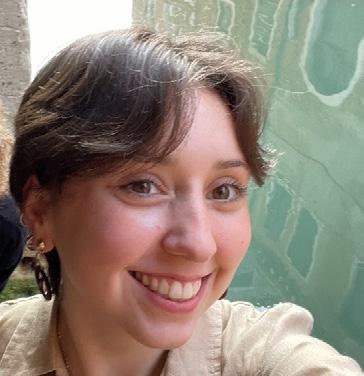
And drinking wells and coming home to me
I miss the childhood joy of the weight of a toy and a
>>>
40

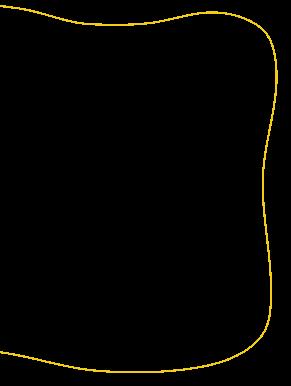


>>>
41
Madison Codoner
Ponder Equality
By Sara Quintero
International Women’s Day, or March 8 of every year, is one to celebrate the achievements of women in every field and a call to action to accelerate gender equality around the world.
Across the globe, there are a wide range of activities and actions to mark International Women’s Day – parties and festivals along with the more serious rallies, campaigns, and conferences centering the accomplishments of women and advances towards gender equality.
International Women’s Day has its roots in the early twentieth century, during the turbulent time of first-wave feminism. In the Czech Republic, the United States,

and other countries in the Western world, various suffragette movements rallied for legal rights and workers rights. International Women’s Day was first celebrated in 1911 by only four countries – Austria, Germany, Denmark, and Switzerland – on March 19. At the time, more than a million women and men attended commemoratory rallies to affirm women’s right to vote, work, and be protected against discrimination. Since then, International Women’s Day grew to be celebrated by millions around the world and became a national holiday in 27 countries.
This increase aligns with the growth of feminism, and the expansion of voting and legal rights, throughout the twenti-

42
Photo by Rachel Dinning
eth century. By 1975, the the United Nations marked the first International Women’s Day and the first theme of International Women’s Day, “Celebrating the past, planning for the future” was introduced in 1996. This year’s theme is to #EmbraceEquity.
This year, International Women’s Day aims to encourage discussions around why equal opportunities are not enough when discussing the advancement of women’s rights around the world. Equity in society, as well as political circles, is fairness with the acknowledgement that social disparities exist and we must make appropriate adjustments to ensure a world that is truly “equal” to all. Equality is simply fairness in the social, political, and economic sectors of society and is ultimately what International Women’s Day hopes to achieve.
But what does equality even look like?
We have always known a world where this vision of equality remains just that – a vi-
sion. We have learned history and read stories where women were repressed, dehumanized, and silenced by men. Our mothers, grandmothers, their grandmother’s grandmothers only knew this world as well. Will our daughters, granddaughters, and our granddaughter’s granddaughters hold the same vision or live it as their reality?
Since the beginning of the feminist movement, small strides have been made in the social and political rights of women in numerous countries across the world. Albeit challenged in some countries, women are business owners, politicians, and scientists. They have built their own chair and pulled it up to the table. In some countries, women are still trying to make space for their chairs. With the recent movement in women’s rights in Iran, it is more important than ever to recognize this and acknowledge the importance of International Women’s Day.
This International Women’s Day is an important day to ponder these questions, ponder answers to gender equality, and celebrate the achievements of women in all walks of life.

43
Photo by Reuters
44
45
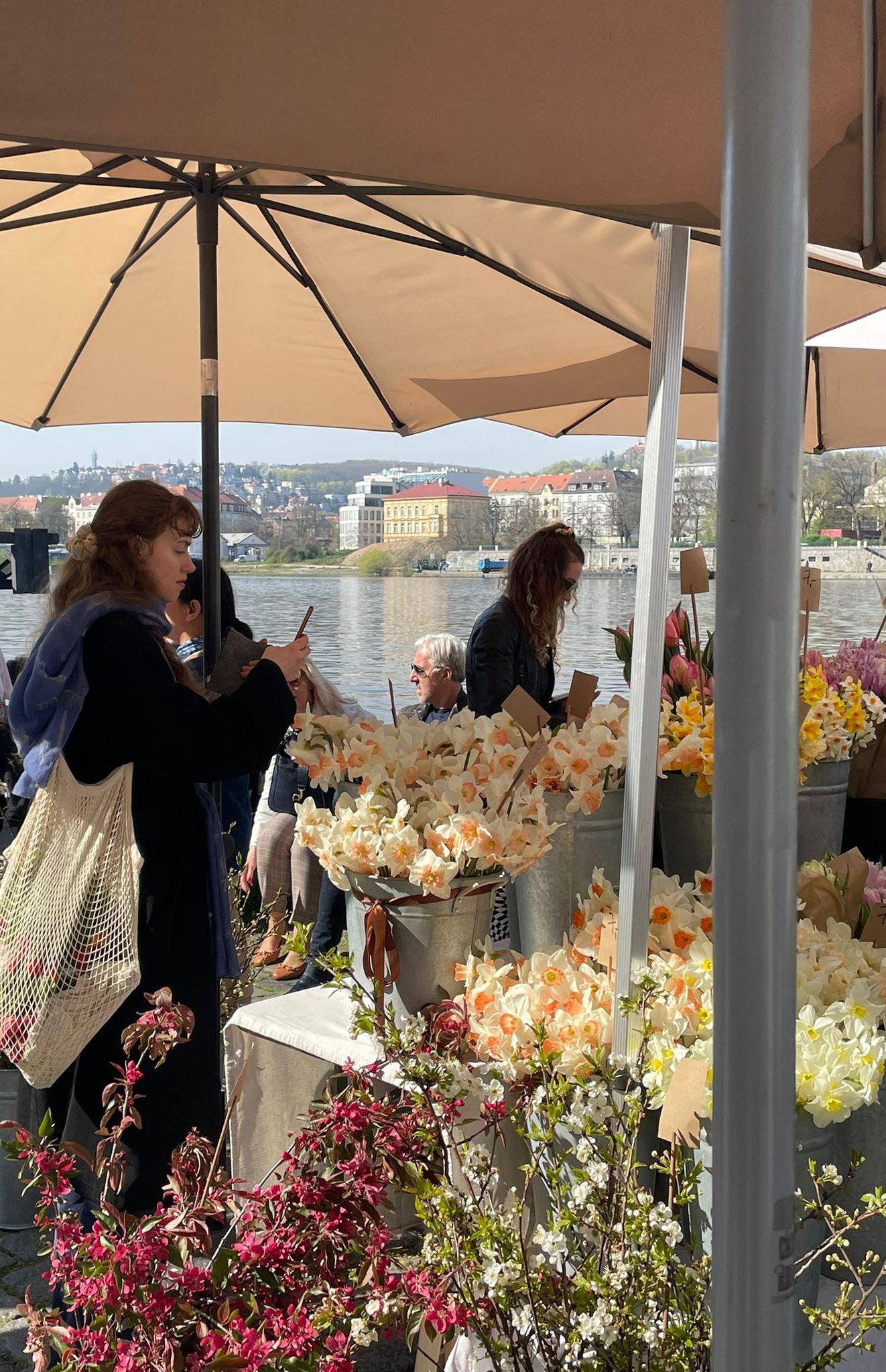
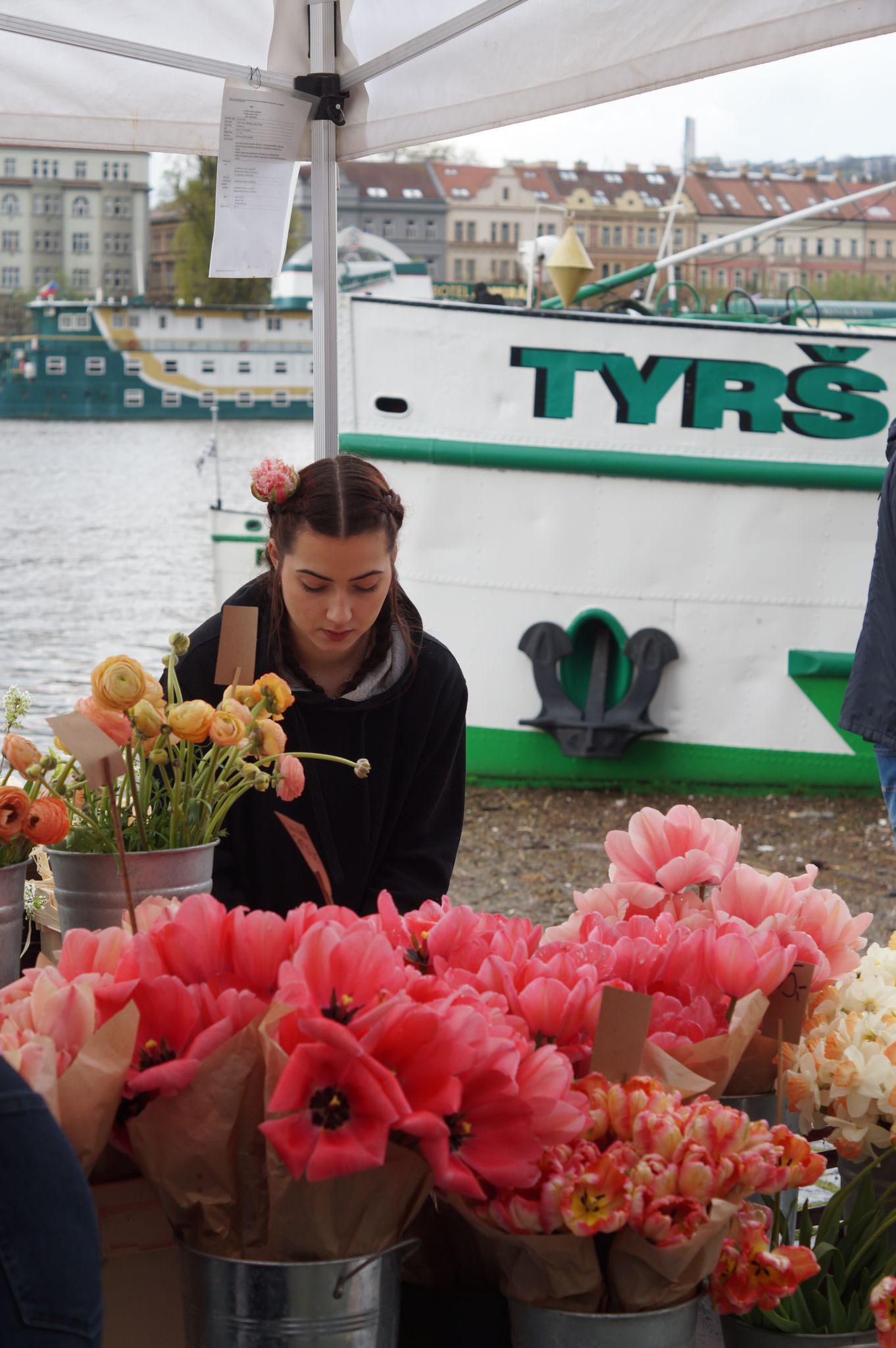

46













 Abigail Calandra Editor in Chief
Maegan Comer Print Editor
Gabriella Burgess Creative Section Editor
Abigail Calandra Editor in Chief
Maegan Comer Print Editor
Gabriella Burgess Creative Section Editor

 Hadley Hyatt Multimedia Editor
Grace Baker Culture Section Editor
Antoinette Goldberg Opinion Section Editor
Nazani Cassidy Layout Designer
Rebeka Hoblik Proofreader
Hadley Hyatt Multimedia Editor
Grace Baker Culture Section Editor
Antoinette Goldberg Opinion Section Editor
Nazani Cassidy Layout Designer
Rebeka Hoblik Proofreader


 Madison’s Tattoo
Madison’s Tattoo




 By Abigail Calandra
By Abigail Calandra








 Photography from Anglo American University Flickr 19
Photography from Anglo American University Flickr 19
 By Ela Angevine
By Ela Angevine
















 By Violeta Zarate
By Violeta Zarate
















